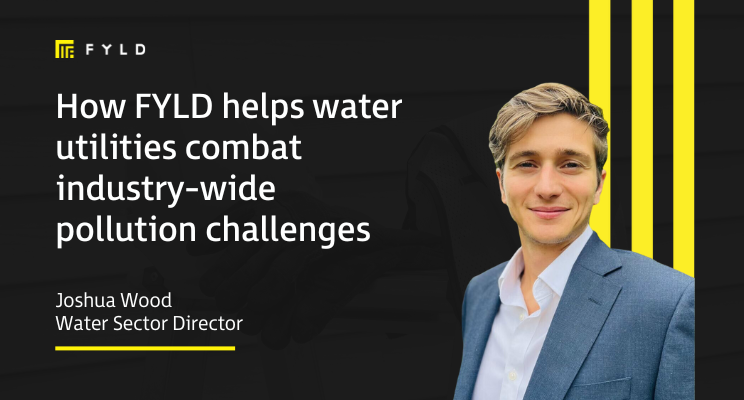How FYLD helps water utilities combat industry-wide pollution challenges
Water companies are under tremendous pressure to raise their standards. FYLD can improve operations and drive change.
Clean water in Britain’s rivers and beaches has become a politically-charged topic in the UK, and it’s easy to see why.
Only 16% of waterways are considered to have a “good” ecological status in England, and a 2022 House of Commons Committee report concluded that there was no river in England free from chemical contamination.[1] Meanwhile, Environment Agency figures show that raw sewage was discharged 301,091 times into England’s rivers in 2022, which amounts to 825 times every day.[2]
The increased focus has led to a government and regulator backlash. The industry has been hit with unprecedented fines from the Environment Agency, and the government has just announced that limits on fines for pollutions are to be scrapped, increasing the economic accountability of water companies for environmental protection.
“The industry is under a lot of pressure across the board,” says Joshua Wood, Water Sector Director at FYLD. “The general public are taking a keen interest in environmental protection and the quality of our rivers and coastal regions. There has never been more focus on sewage discharge into watercourses, and companies are committed to finding new ways to reduce and respond to pollution incidents. That’s where FYLD’s platform can add significant value.”

FYLD works extensively with UK water companies and contractors, including Southern Water, South West Water, Yorkshire Water, Galliford Try, Kier, and Morrison Water Services. At FYLD, we use our water and wastewater expertise to help the sector find solutions to these very real problems.
“Southern Water is committed to improving our pollution performance,” says Alex Saunders, Head of Wastewater Networks at Southern Water. “We have strategic plans in place delivering investment in our assets, alongside investing in our operational processes, and FYLD is a critical part of this strategic plan. FYLD is enabling effective remote decision making for control centres and remote managers, ensuring critical decisions are timely made and backed by real-time data. We are improving our first response to pollution scenarios through remote-visibility with FYLD, avoiding operational incidents before they occur, and improving our response when they do.”
FYLD is working with the industry to tackle the challenges in two ways; using data and technology to predict and prevent pollution incidents through proactive management, and improving the critical first-response through real-time pollution control centres.
“Without FYLD there is a gap in getting real-time data around pollution events from the field into the control teams, which is where a lot of the decision-making happens,” says Wood. “The first half an hour is critical in the decision-making process. But control teams don’t have visibility of what’s going on on-site and are reliant on phone calls to pass data and photos being emailed to a control team. With FYLD, they have visibility in real-time.”
FYLD’s AI-powered platform allows on-site teams to capture data before or during a pollution event, which is pushed directly to the control team. This visibility allows the control team to make better-informed decisions, potentially preventing a pollution incident or minimising the environmental impact.
The government’s target is to raise the 16% of waterways marked as having a “good” ecological status in England to 75% by 2027.[3] It is an ambitious target, but one that will see our rivers and beaches returning to a healthier state. At FYLD, we are proud to be playing a role in helping the industry tackle its pain points and strive for a cleaner future.
To find out more about how FYLD is delivering efficient and safe water and wastewater operations click here.
[1] https://www.lboro.ac.uk/news-events/news/2023/april/uk-waters-too-polluted-to-swim/
[2] https://www.reuters.com/world/uk/sick-sewage-britons-protest-water-companies-pollution-2023-05-20/






